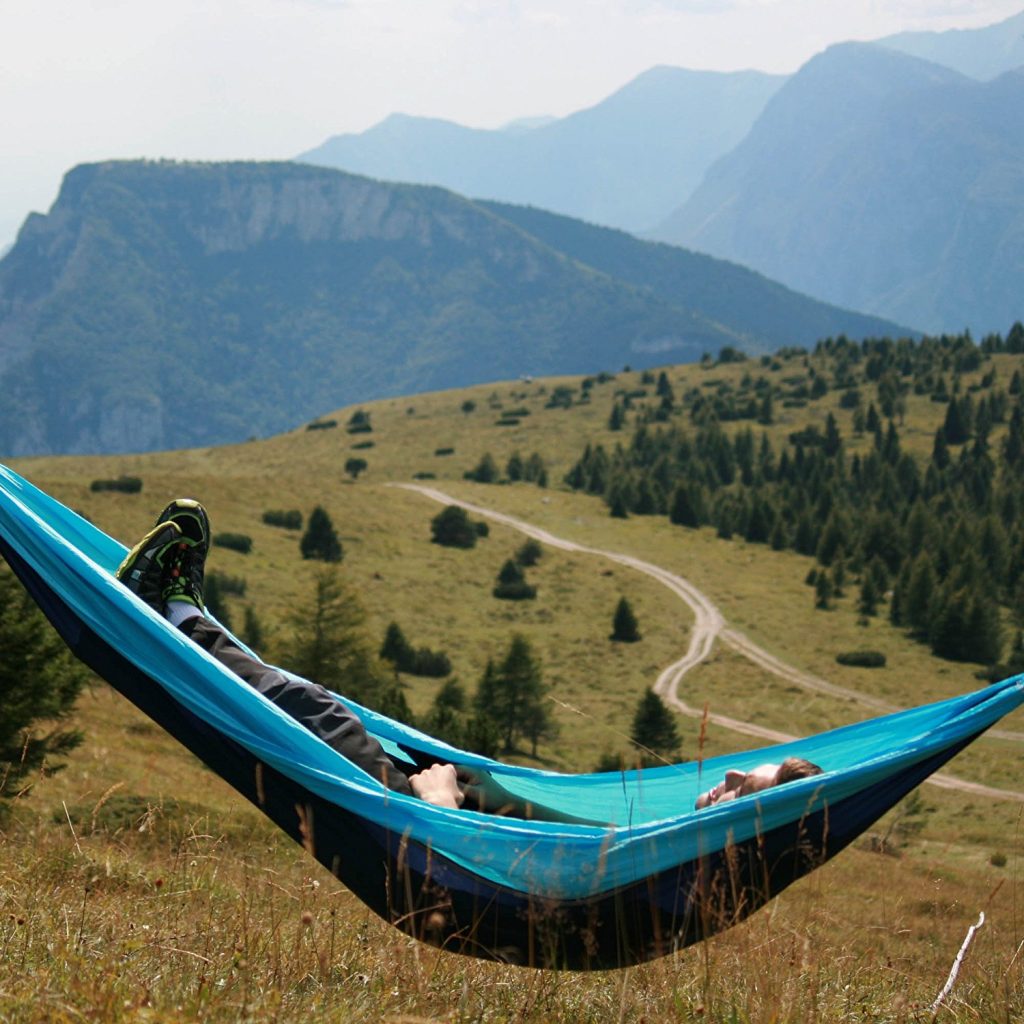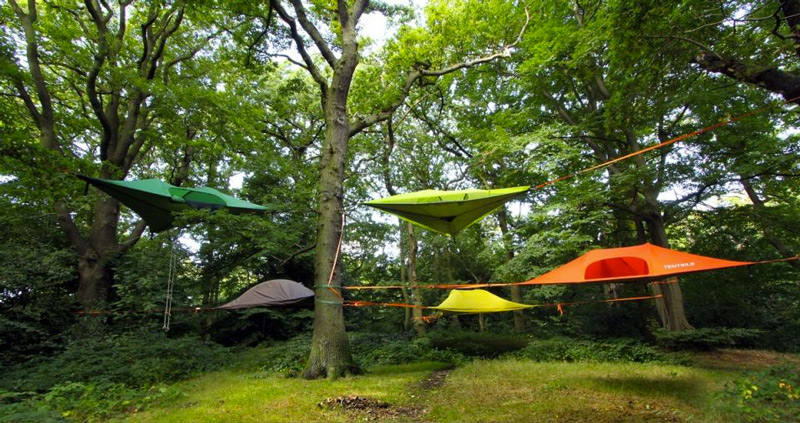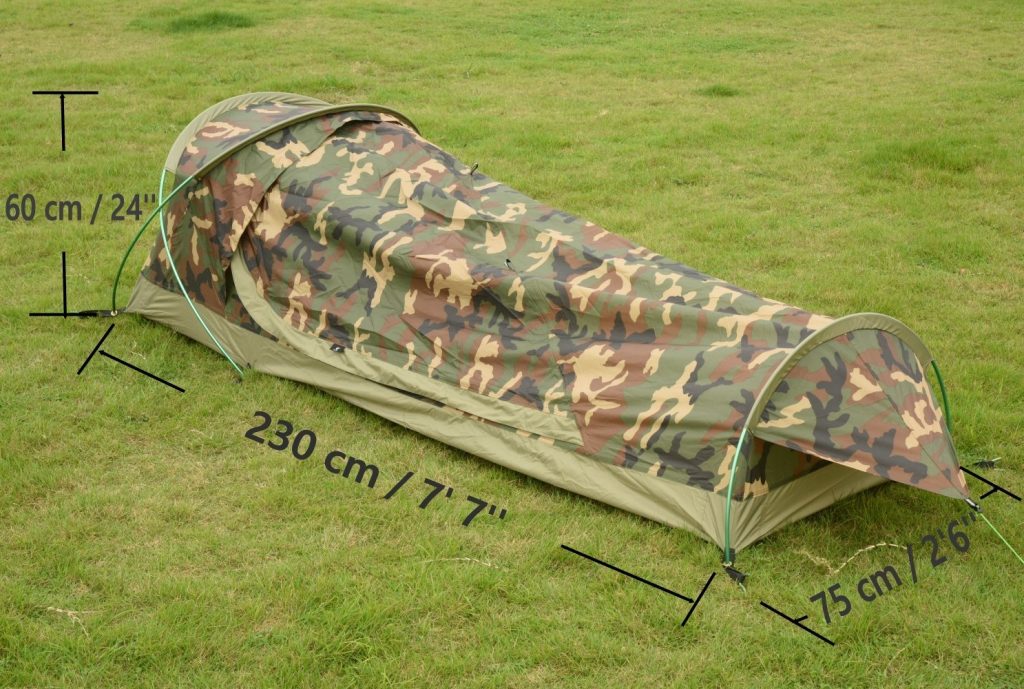People think there is only ONE way to camp in the wilderness, but there are actually multiple.
I have listed 7 inside this article.
Yes, believe it or not but there are 7 ways you can camp out in mother nature.
The rise of technology means bigger and better outdoor equipment for us outdoor goers.
You will see what I am talking about in the next 2 minutes.
Lets get right into it, because I know you want to discover the 7 best!
1. Tent camping
Tent camping is the “meat” of camping.
When someone mentions camping, a tent is the first thing that comes to mind.
It’s funny because it’s true.
Of course you probably already know what the heck a tent is, but for the sake of this article I’m going to show you anyway 🙂
Closed tent

A closed tent is when you have the rain fly on and all doors closed.
This means it is safe from the rain and high winds.
And if it’s a 4-season tent, it is safe from snow as well.
You cannot use a 3-season tent in the snow – they aren’t designed for such conditions – it will just destroy the tent.
Without the rain fly

So as you can see; this is the exact same tent as above. However, it now has the rain fly removed.
Because the “waterproof” protection has been removed (rain fly), it is not waterproof anymore.
So why remove the rain fly?
For those hot, muggy nights in the summertime of course.
A lot of tents offer stargazing opportunities. This is when the ceiling is made of mesh.
Some tents offer a little bit of mesh, while some manufacturers go all out!
Below is the Wenzel Evergreen Tent. This is the definition of stargazing. The rain fly is removed to reveal a full view of the surrounding areas, and of course the sky.
And before you ask, yes you are safe from mosquitoes!
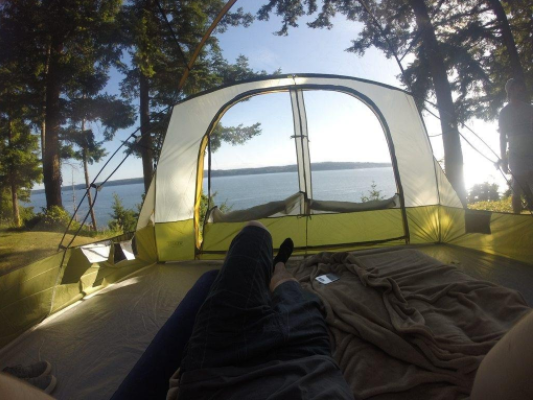
Open tent
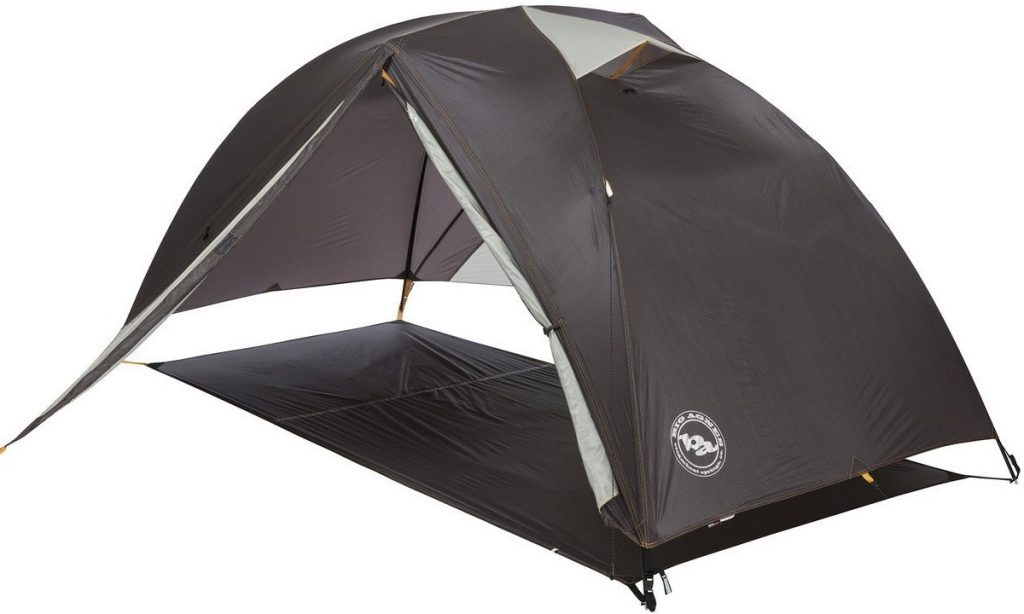
What the heck is this?
This is what you call a tent that’s pitched without the tent body!
And it’s only available on certain tents. A tent has to be designed for it otherwise it cannot be done.
Basically, this offers a chance for camp goers to sleep out in the open while still staying protected from the rain and wind.
’tis a good idea for ultralight backpackers (people cutting down on weight to travel over long distances).
One tent that contains this specific feature is the Big Agnes Foidel Canyon 2.
2. Hammock Camping
You also probably know what a hammock is.
However, you’ve probably only seen one hung up between 2 trees at somebody’s house.
Well not anymore.
Hammock camping is real, and it’s only growing each and every year.
When people want to experience other means of camping – other than in a tent – they’ll usually try out hammock camping.
It is the act of hanging a hammock up between 2 trees and sleeping in it for the night.
No Bug Net
You can either use a hammock with or without a bug net.
The former is a viable option ONLY if you’re in climates where bugs won’t be an issue.
Otherwise a bug net is 100% required and recommended, or you may experience one of the worst nights of your life.
With Bug Net
Just because you’re sleeping out in the open, that doesn’t mean hammocks can’t keep you safe from those pesky mosquitoes!
So yes, there are certainly bug nets available for hammocks.
This is a guaranteed way to stop you from getting bitten during the night.
3. Tree Tent
There’s a good reason why this is called “next-level” camping.
This type of camping brings a new definition to the word!
Tree camping is all about hanging a tent in the air as it’s tied to surrounding trees.
Although some might say this isn’t for the feint-hearted, I think it’s a good option for nervous/anxious camper.
No wild animals can get to you, and neither can other humans.
If you’re nervous about camping in the wilderness, this is next-level camping and one of the best ways to go in my opinion.
4. With a tarp
Basically, camping with a tarp is exactly that.
You choose a comfortable sleeping pad, a warm sleeping bag and sleep under the tarp for the night.
A tarp is only there to keep you sheltered from the rain, in the event of a sudden storm.
This might seem silly, however, it’s actually smart if you know how to use it properly.
Camping with a tarp saves on weight, and you can make some amazing shelters after some practice.
The more you test things out, the better/more experienced you become.
5. Natural Shelter
With our without a tarp, it is completely up to you.
A tarp just makes the entire “building a shelter” process MUCH more enjoyable, and of course easier since you know a tarp is guaranteed to keep you dry (well, almost anyway).
Unless you’re experienced in this field, you don’t always know if your natural shelter is going to keep you dry.
A natural shelter is all about building your own shelter out of natural materials – sticks, branches, forest duff, leaves, etc.
6. Under the Stars
All you need is a comfy sleeping pad and a very, VERY warm sleeping bag.
Because that’s all that’s keeping you alive during the night.
For this to work in your favor, you need to know 100% that the weather’s going to play the part.
And of course this is hard to determine, as storms can happen in the midst of summer!
7. Bivy Sack
I absolutely LOVE bivy sacks! I also think that they are underrated.
Why?
They’re extremely effective in bad weather – surprisingly, and setup is as easy as 1, 2, 3.
These are great options for when you’re backpacking.
Get stuck in a sudden storm, no worries, just whip out a bivy sack and get it up in a minute or 2.
You’re sheltered from mother nature in almost an instant.
They have their pros and cons. They do not provide much room to move, so this may not be for you if you enjoy your space in the outdoors.
==> Get the Ultralight 1-Person BIVY Tent here <==
My Final Words
Camping is simply amazing.
My advice to you is that you should not stick to one type of camping.
Sleeping in a tent is awesome, there’s no doubt about it.
But if you’re trying to expand your knowledge about the outdoors and experience a whole different feeling, you need to switch up the type of camping you’re doing.
Try hammock camping or tree camping.
They are both great and my recommended choice for anyone that’s tired of sleeping in a tent.
Sleeping under the stars, with a tarp or in a natural shelter is more for you only if you know a lot about the outdoors already.
These are for more advanced campers, but that doesn’t mean you can’t work your way up to it because you definitely can 🙂
Well there you have it – 7 different ways to camp in the wilderness.
I wish you all the best in whichever adventure you choose.
Need more advice or have any questions about this article? Then ASK me in the comments below!
Cheers.
Well thanks for reading and have a great day.
-Brandon

